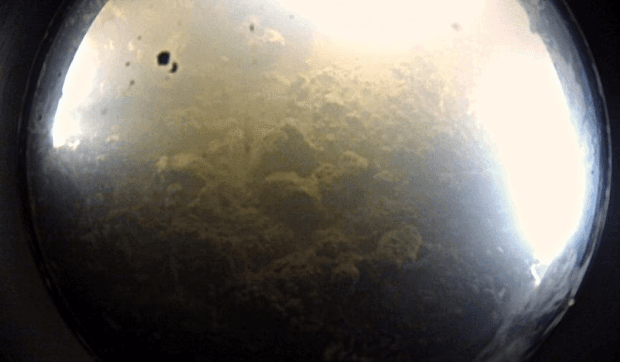Breakthrough Antarctic Finding: Life in Subglacial Lake
The first view of the bottom of Subglacial Lake Whillans – soft lake sediments crumble as the WISSARD underwater camera touches the bottom. The area viewed in the image is about 0.15 meters (6 inches) across (credit: Dr. Alberto Behar, JPL/ASU; underwater
Scientists have been trying for years to drill deep through the polar ice cap of Antarctica to explore sub-glacial lakes far below.
In theory, the water down there, isolated from the rest of the world for millions of years, could be home to ancient microbes that could offer clues about everything from the origins of life on earth to the possibility of life in space.
It’s been rough going so far, but American scientists say they finally have their “eureka” moment.
Last month, they brought up samples of water and sediment from sub-glacial Lake Whillans, not far from the South Pole.
Now they’ve tested those samples and they’ve announced that they do indeed contain living bacteria.
The scientists haven’t published their results yet, or established whether the microbes are unique. But they say they’re convinced that their results are clean, meaning the bacteria they found weren’t introduced by the drilling process itself.
Lead researcher John Priscu of Montana State University told the New York Times that they still need to find out what the microbes are and how they make a living. But for now, he told the Times they’ve gotten their first glimpse of what has been a completely unknown ecosystem.
